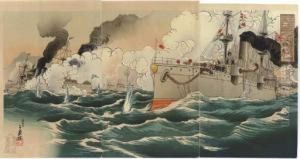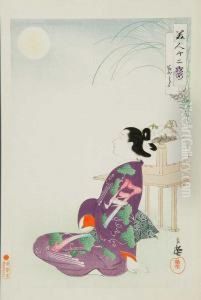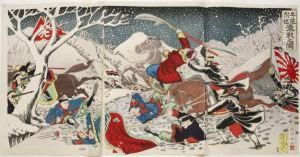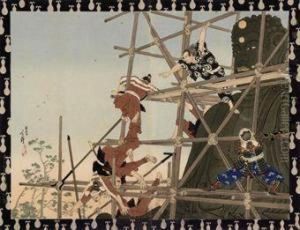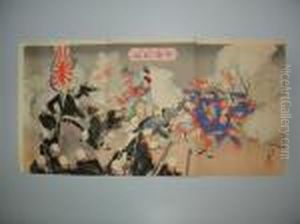Migata Toshihide Paintings
Migita Toshihide, born in 1863, was a Japanese artist known for his work as a woodblock print designer during the Meiji period. He was a student of the ukiyo-e master Tsukioka Yoshitoshi and later worked with another prominent artist, Yoshu Chikanobu. Toshihide's work reflects the transitional period of Japanese art, where traditional ukiyo-e techniques were being adapted to cater to both domestic and foreign tastes during a time of rapid modernization and Western influence in Japan.
Toshihide's oeuvre includes a variety of subjects, such as depictions of historical events, scenes from kabuki theater, and portraits of famous warriors and beautiful women, which were common themes in ukiyo-e art. He was particularly adept at musha-e (warrior prints) and was known for his dynamic compositions and attention to detail. One of his significant contributions was his work on the Sino-Japanese War and Russo-Japanese War prints, which served as a form of propaganda and documentation of these conflicts.
After the wars, Toshihide also ventured into illustrating books and newspapers, embracing the role of an artist in the rapidly modernizing society of Meiji Japan. His work during this time reflects a blend of traditional Japanese aesthetics with an incorporation of Western techniques and perspectives, which was indicative of the broader trends in Meiji-period art. Toshihide continued to create art until his death in 1925, leaving behind a legacy that captures a unique period in Japanese history where art served as a bridge between the past and the future.
